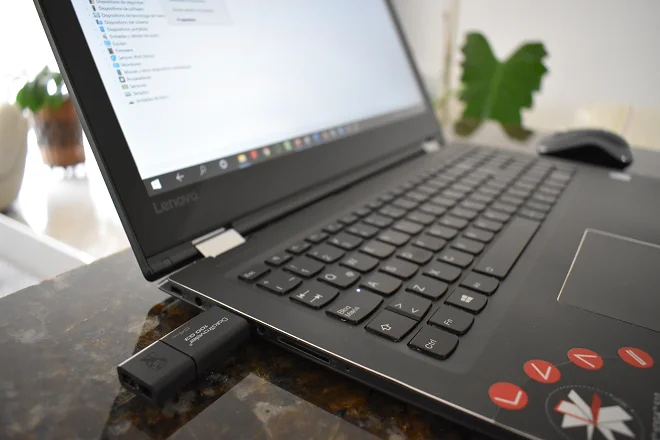Regain access to your memory stick without the need to format it or use programs, or by formatting it as a last resort.

Does your PC not want to recognize your USB drive? Windows usually immediately recognizes a USB flash drive that is connected to the PC. However, there are times when it displays an error message such as: “USB device not recognized”.
Don’t worry, this problem is usually just due to misconfiguration or outdated hardware drivers, and can be easily resolved from Windows Device Manager. The steps to follow are listed below.
How to Fix USB device not recognized error in Windows
Connect your memory stick to your computer. Then, right-click on the Windows Start menu and select Device Manager.
Click on the Scan for hardware changes icon so that the Device Manager can detect your USB Key and install its drivers automatically. After this, your USB Key should already be recognized by the system.
Option to search for hardware changes from Windows Device Manager
What to do if your USB Flash drive is still not recognized
If your USB drive is still not recognized:
Double-click on the Universal Serial Bus controllers option. Right click on each of the devices and select Uninstall device. Restart your PC so that Windows will reinstall the drivers from your USB drive.
Finally, keep in mind that there are plenty of counterfeit USB devices. In these, operating errors, limited time of use and the presence of false information in their storage capacity are common. The procedures described above may not resolve errors with such devices.
Format your USB as a last resort
On the other hand, it is possible that when you connect your USB drive, no message is displayed or does not appear in the File Explorer. To force its detection, you can use the following trick. It consists of using a bootable USB disk burning and formatting program like Rufus. These are the steps you must follow.
Run Rufus on your Windows computer. In the program window, go to Device and verify that your USB drive has been detected.
If yes, proceed as follows. Download a Linux distro in ISO format that doesn’t weigh much, for example Puppy Linux (270 MB). Once the download has taken place, use the SELECT box to add the file in question to your USB drive. Leave the remaining boxes with their default options and finally click on START.
If the process finishes successfully, close the program and format your USB again, but this time from Windows Explorer. Right click on the memory and select Format. Then click Start.
Note: formatting will delete all information on the USB memory.